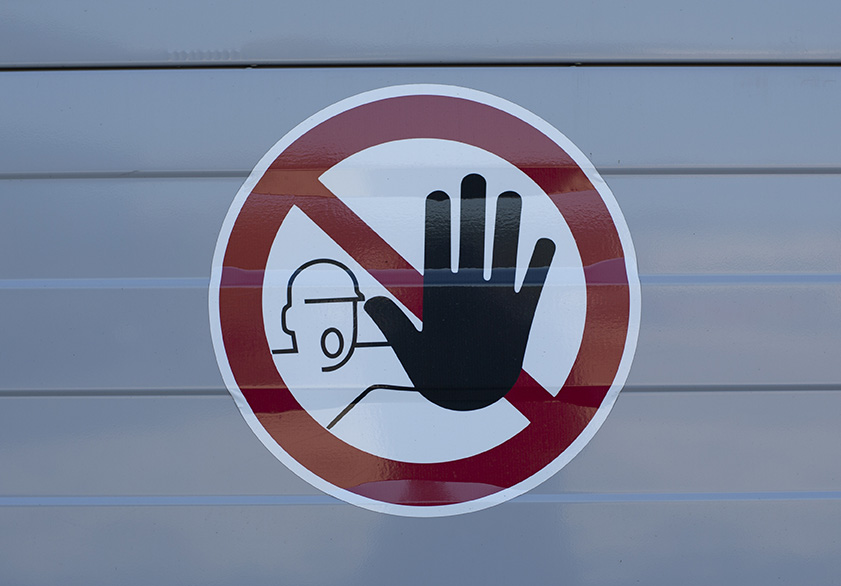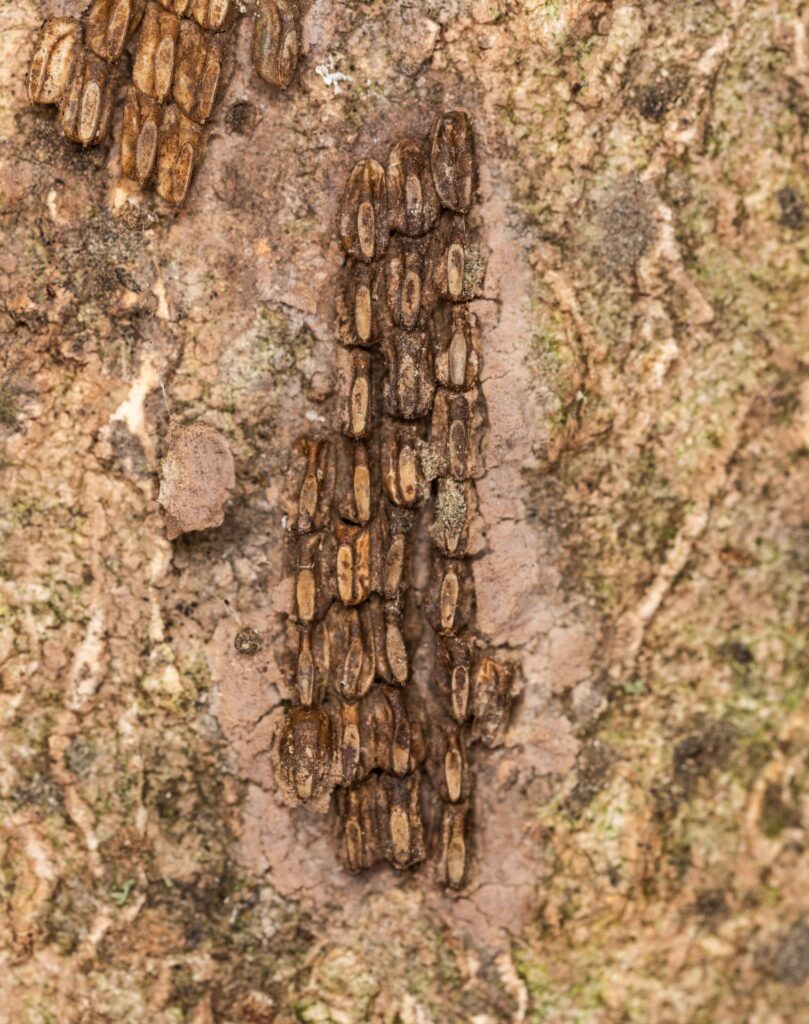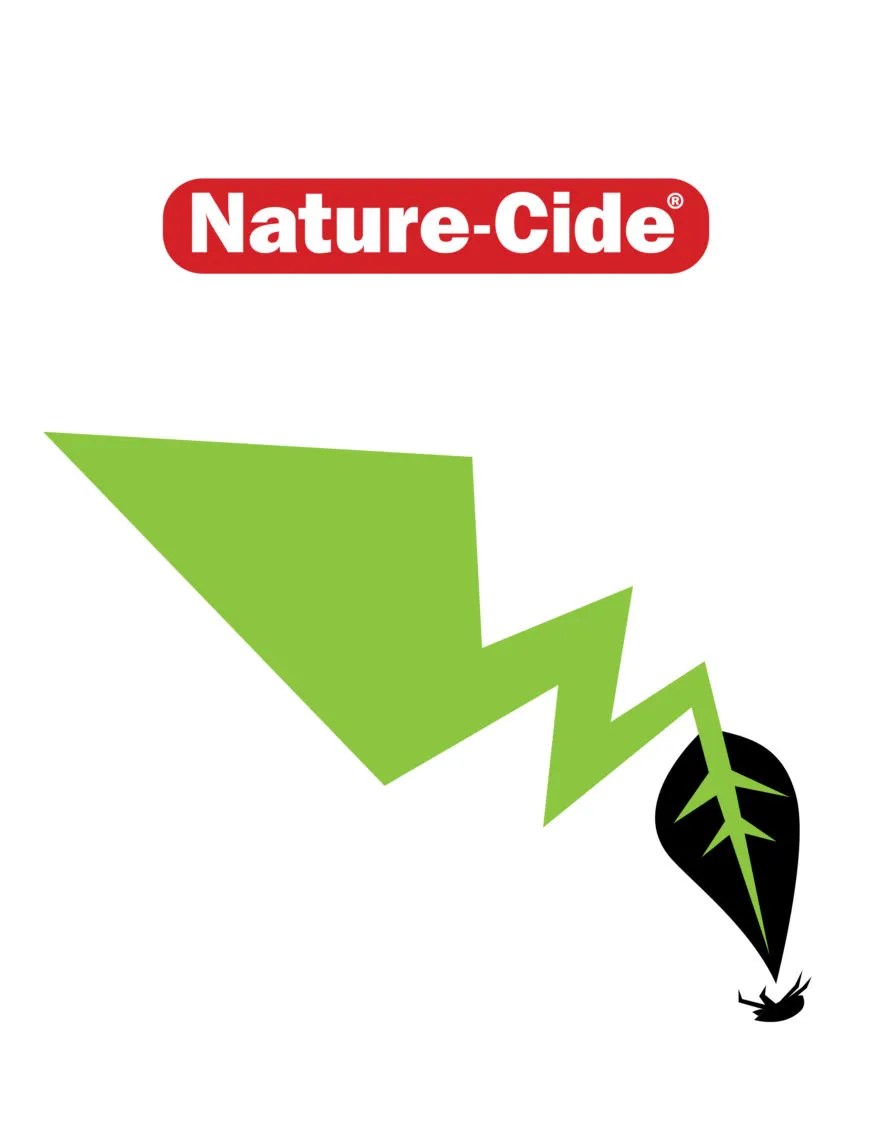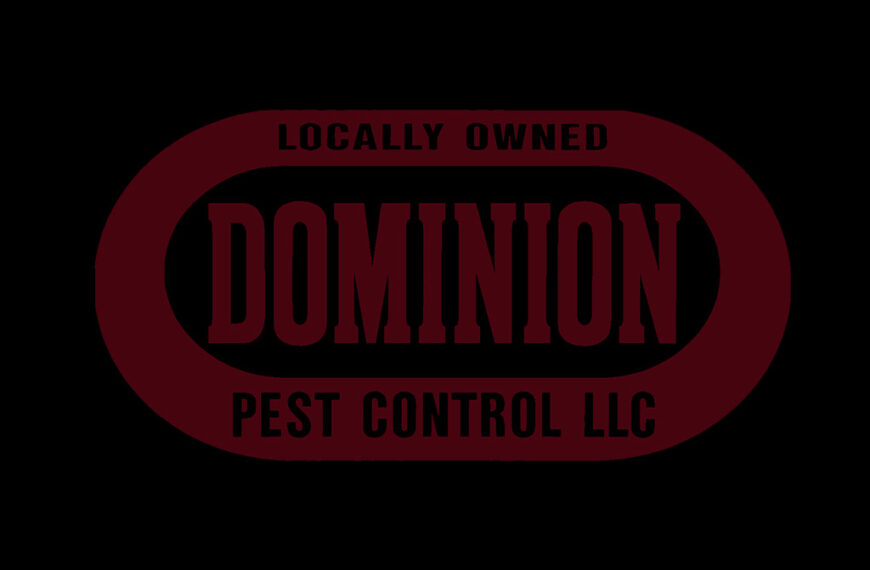Kill Spotted Lanternfly: Effective Control & Prevention
How to identify a Spotted Lanternfly infestation in Southcentral Pennsylvania: Look for clusters of eggs on trees, outdoor furniture, or siding (they resemble grayish, putty-like smears), large groups of red and black nymphs or adult flies with bright red underwings, sticky “honeydew” residue on surfaces, and a black sooty mold growing on trees or plants.
Interestingly, when treating trees to control Spotted lanternflies, Dominion Pest Control technicians noticed stinging insects like yellowjackets bullying the SLF out of their way to take over the honeydew. Wilting leaves and oozing tree wounds are also signs of infestation.
Spotted Lanternfly
Why Are Spotted Lanternflies a Problem in Pennsylvania?
They may look striking with their red and spotted wings, but Spotted Lanternflies are a serious invasive pest. These planthoppers feed on a wide range of plants (including grapevines, maple trees, black walnuts, and backyard ornamentals) weakening them over time. While they don’t always kill their host plants outright, their feeding adds stress that can lead to long-term damage, especially when combined with disease or harsh weather.
Despite their name and myth-inspired classification (Fulgoridae, after the Roman goddess of lightning), these pests aren’t bioluminescent. They’re destructive. (Read Spotted Lanternflies Are a Major Threat)
A Dominion Pest Control technician can perform a detailed inspection to confirm Spotted Lanternfly activity. If you’re facing an infestation on your Pennsylvania property, we’ll develop a targeted spotted lanternfly treatment plan to kill these pests effectively. Our proven methods stop the spread and protect your trees, plants, and structures from further damage.
What Are the Most Common Types of Lanternflies?
There is only one species of lanternfly currently making headlines in the United States: the Spotted Lanternfly (Lycorma delicatula). Despite the name “lanternfly,” it’s not a true fly but a plant-hopper in the order Hemiptera. It’s native to parts of Asia and is an invasive pest in areas like Pennsylvania, where it’s still a significant problem, with reports of their return. In regions where there are vineyards and young trees, their infestation is of particular concern. (Read Save Your Trees From Spotted Lanternflies)
Globally, there are many species of lanternflies (more than 140), mostly in tropical regions of Asia, Africa, and South America. They belong to the family Fulgoridae, and some of the more well-known types (outside the U.S.) include:
- Pyrops candelaria – Found in Southeast Asia, known for its colorful, elongated snout.
- Fulgora laternaria (a.k.a. Peanut-headed Bug), Found in Central and South America.
However, in our region, the Spotted Lanternfly is the only one of concern; there are no “types” of Spotted Lanternfly, just different life stages:
- Egg Masses
- Nymphs (black with white spots, then red and black)
- Adults (gray wings with black spots and red underwings)
So if you’re seeing lanternflies in Pennsylvania, it’s the Spotted Lanternfly and you’ll want to have one of our expert pest control technicians assess the situation on your property. PennState Extension offers comprehensive details on the spotted lanternfly.
Active Season for Spotted Lanternflies in Pennsylvania
Spotted Lanternflies are most active from late spring through early fall, with different behaviors at each life stage:
Activity by Season:
May–June: Nymphs hatch from egg masses. At this stage, they are black with white spots and later turn red and black. They’re highly mobile and start feeding on soft plants and new growth.
July–September: Adults emerge and become more noticeable. This is when they feed heavily on trees like Ailanthus (Tree of Heaven), grapevines, maples, and black walnuts. They’re also more active in flight during this time.
September–November: Adults begin mating and laying egg masses on trees, outdoor furniture, vehicles, and other surfaces. Egg-laying continues until the first hard frost.
Peak Activity:
Late summer and early fall is the most visible and destructive period, as adults swarm, feed in large numbers, and deposit eggs. However, the spotted lanternfly begins laying egg masses in October and continues through November. Each egg mass can hold between 50 and 70 developing nymphs. In heavily infested areas, technicians often find as many as 70 egg masses on a single tree.
Not Sure If You’re Dealing with a Spotted Lanternfly Infestation?
Here are the most common signs to look for on your property—many are easy to spot if you know what to watch for:
Swarming Nymphs or Adults

Learn how Exterminators are Winning the Race to Eradicate Spotted Lanternflies.
How To Get Rid of Spotted Lanternfly
Our pest control company may use the following spotted lanternfly treatment options:
Getting rid of Spotted Lanternflies requires a combination of direct treatment and long-term prevention. At Dominion Pest Control, we approach this invasive pest with proven, effective methods that are safe for your property and the environment.
Dominion Pest Control’s professional treatment options may include:
- Tree Banding: Sticky bands are placed around tree trunks to trap nymphs as they crawl upward. However, make sure no birds get stuck on lanternfly tape.
- Systemic Insecticides: These are absorbed by trees or plants and target lanternflies when they feed.
- Contact Sprays: Direct application of EPA-approved insecticides to kill lanternflies on contact.
- Green Pest Control: Nature-Cide products, specifically those containing clove, cottonseed, cedar and cinnamon can be used to control spotted lanternflies.
- Scraping & Destroying Egg Masses: Fall and winter egg mass removal prevents population growth in spring.
- We suggest that you remove Tree-of-Heaven (Ailanthus altissima) from your property: This invasive tree is a preferred host and removing it can disrupt the lanternfly’s lifecycle.
- Schedule to have our pest control technician inspect your property and treat it properly.
While chemical treatment is currently one of the most effective methods, possible natural predators have been observed, including birds, spiders, and native insects, offering hope for future biological control. Read about the Spotted Lanternfly’s natural enemies.
Common Options We Do Not Recommend

- Homemade or Unapproved Pesticide Sprays: Many DIY mixtures (like vinegar, dish soap, or essential oils) are not effective and may harm beneficial insects, pets, or plants. There are dangers in self-treating for pests.
- Duct Tape for Tree Banding: While sticky bands are effective, duct tape can injure birds, squirrels, and other non-target wildlife. Dominion recommends specially designed, wildlife-safe tree bands instead.
- Torching or Burning Egg Masses: This can be dangerous and pose a fire risk, especially on trees or near dry landscaping. Mechanical scraping and disposal are safer alternatives.
- Using Unregulated Chemicals: Applying unregistered or agricultural-grade chemicals without training can pose serious health risks and violate EPA or Pennsylvania regulations.
- Introducing Non-Native Predators: Releasing foreign insects or animals to control lanternflies is not approved and may create new ecological problems.
What’s My Next Step for Lanternfy Control?
Choose peace of mind! If you suspect you have a lanternfly infestation, use our form to start living pest-free. Dominion Pest Control will get in touch ASAP.
Pricing: Most professional extermination programs cost $150-$500. After our professional exterminator conducts an official inspection, they can provide a quote for spotted lanternfly removal. The final cost can vary significantly based on multiple factors, making an inspection and quote the best first step.
How to Prepare for Your Exterminator: Essential Tips for a Successful Treatment
Preparation for your spotted lanternfly extermination will depend on which treatment option is needed to control the pests in your home or building. Your technician can go over any preparation needs.
Prevention: Best Next Steps to Avoid Re-Infestation of Spotted Lanternfly
After our professional treatment, staying vigilant is key to keeping Spotted Lanternflies from returning, especially in Southcentral PA, where infestations remain active. Here’s what to do next:
- Continue Scraping Egg Masses: Regularly check trees, outdoor furniture, fences, and vehicles from fall through early spring. Destroy any egg masses you find.
- Monitor Host Trees Weekly: Keep an eye on grapevines, maples, black walnuts, and Tree of Heaven for signs of new activity, such as swarming insects, honeydew residue, or sooty mold.
- Use Wildlife-Safe Tree Bands: If it’s nymph season (late spring to early summer), consider adding sticky bands to high-risk trees. Use guards to protect non-target wildlife.
- Limit Outdoor Clutter: Keep yard equipment, wood piles, and outdoor furniture clean and away from trees. Spotted Lanternflies often lay eggs on these surfaces.
- Inspect Vehicles Before Travel: Before driving or transporting materials, especially to or from quarantined areas, check for hitchhiking insects or egg masses. Learn more about quarantined areas in Pennsylvania.
- Support Healthy Landscaping: Prune trees and maintain good plant health to help your landscape better resist insect stress.
- Report Any New Sightings: Stay in touch with our pest control providers or report infestations to local agricultural authorities to help monitor spread across Southcentral PA.
These steps work hand-in-hand with professional treatment to provide lasting protection and keep your property lanternfly-free.
FAQs
What Eats Spotted Lanternfly Eggs?
Some native insects and birds have been observed eating the eggs. Penn State Agricultural Sciences recently shared an article about stink bugs and certain mantises potentially eating spotted lanternfly. However, they are not reliable control methods. Dominion Pest Control can safely remove egg masses to prevent hatching.
Do Spotted Lanternfly Bite?
No, they do not bite humans or pets. They’re a threat to plants, not people.
Where Did Spotted Lanternfly Come From?
They are native to Asia and were first detected in Pennsylvania in 2014.
Do Birds Eat Spotted Lanternfly?
Some birds have been seen feeding on them, but not in high enough numbers to control populations. Professional treatment from Dominion Pest Control is far more effective.
What is a Spotted Lanternfly Permit Holder?
Businesses moving goods in or out of quarantined areas must have a permit showing they’re trained to inspect and manage lanternfly risks.
Does Vinegar Kill Spotted Lanternfly?
It may kill on contact, but it’s not reliable or safe for plants. Use professional solutions from Dominion Pest Control for proven results.
When Did Spotted Lanternfly Get to Pennsylvania?
They were first confirmed in Berks County in 2014 and have since spread across much of the state.













